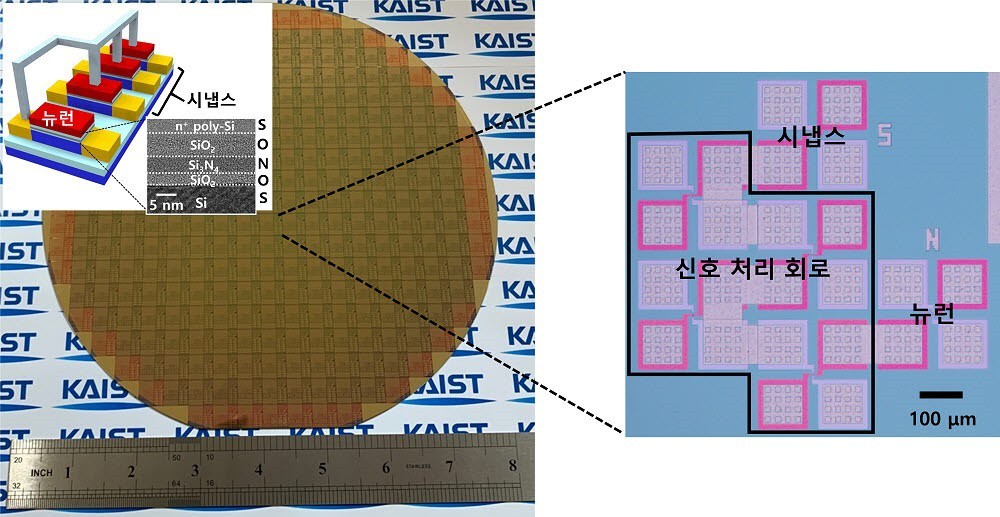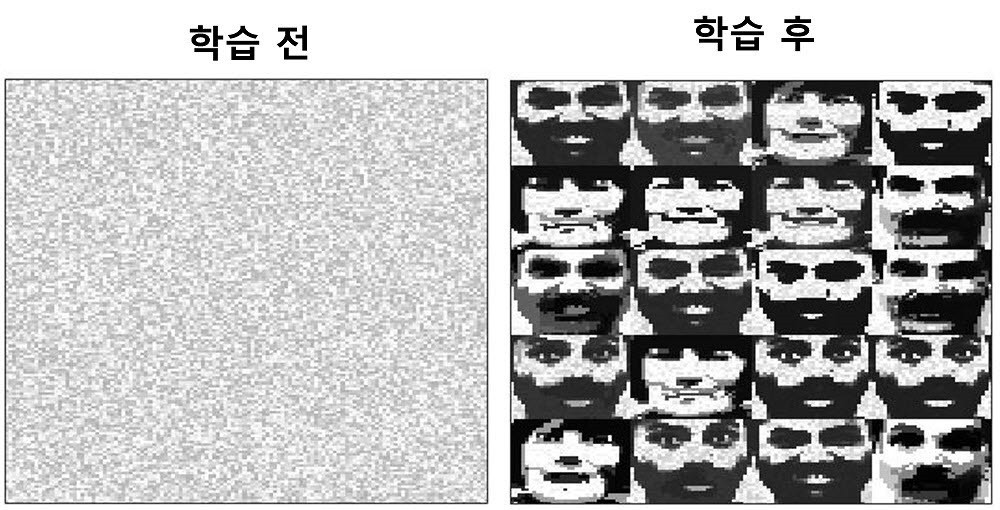Implements AI technology with ultra-low power
Displays simultaneous neuronal and synaptic functions
Able to perform text and image recognition
Increases Integration by 3500 times... advances commercia
The Korea Advanced Institute of Science and Technology (KAIST, President Kwangh-yung Lee) announced on the 5th that a team led by Professor Yang-kyu Choi and Sungyool Choi in the School of Electrical and Electronic Engineering has developed a highly integrated neuromorphic semiconductor that mimics a human brain.
Neuromorphic hardware(HW) imitates the human brain performance that execute complex functions yet consumes only 20 watts(W) of energy. It implements artificial intelligence (AI) with ultra-low power.
Implementing neuromorphic HW requires neurons and synapses, which connects the neurons, similar to the human brain. However, analog circuit-based neurons and synapses require a large area, which limits degree of integration.
Various materials and structures have been proposed, but most of them cannot be manufactured with standard silicon microprocessing technology, which causes difficulty in commercializing and massproducing them.

The research team implemented a neuromorphic semiconductor composed of neurons and synapses using a single transistor that can be produced with standard silicon microprocessing technology. The neuromorphic semiconductor was produced by also integrating an 8-inch wafer simultaneously.
Neuromorphic transistors have same structure as transistors for memory and system semiconductors that are currently being mass-produced.The research team performed memory functions and logic operations, and showed new possible neuromorphic actions through experiments.
A new operating principle was applied to the existing mass-produced transistors to produce neuromorphic transistors. They have the same structure but completely different functions. It is the first in the world to prove that the neuromorphic transistor can be implemented as a 'Janus particle' that functions as a neuron and a synapse at the same time as if it is front and back sides of a coin.
The integration is also high. The flat area required for the construction of the existing neuron circuit is 21,000 units, whereas the newly developed neuromorphic transistor is 6 units or less. The degree of integration increased by 3500 folds. This significantly increased the possibility of commercializing the neuromorphic HW system.

The research team mimicked some brain functions, such as Programmable Gain Amplifier and simultaneity judgment, and showed text and face image recognition with the newly developed neuromorphic semiconductor.
Ph.D. student Jun-kyu Han said, “We have shown that a single transistor based on complementary metal-oxide-semiconductor (CMOS) can operate neuronal and synaptic functions. Combining neurons, synapses, and additional signal processing circuits on the same wafer improved the degree of integration, and we will be able to take a step closer incommercializing HW.”
Daejeon = By Staff Reporter Youngjoon Kim (kyj85@etnews.com)